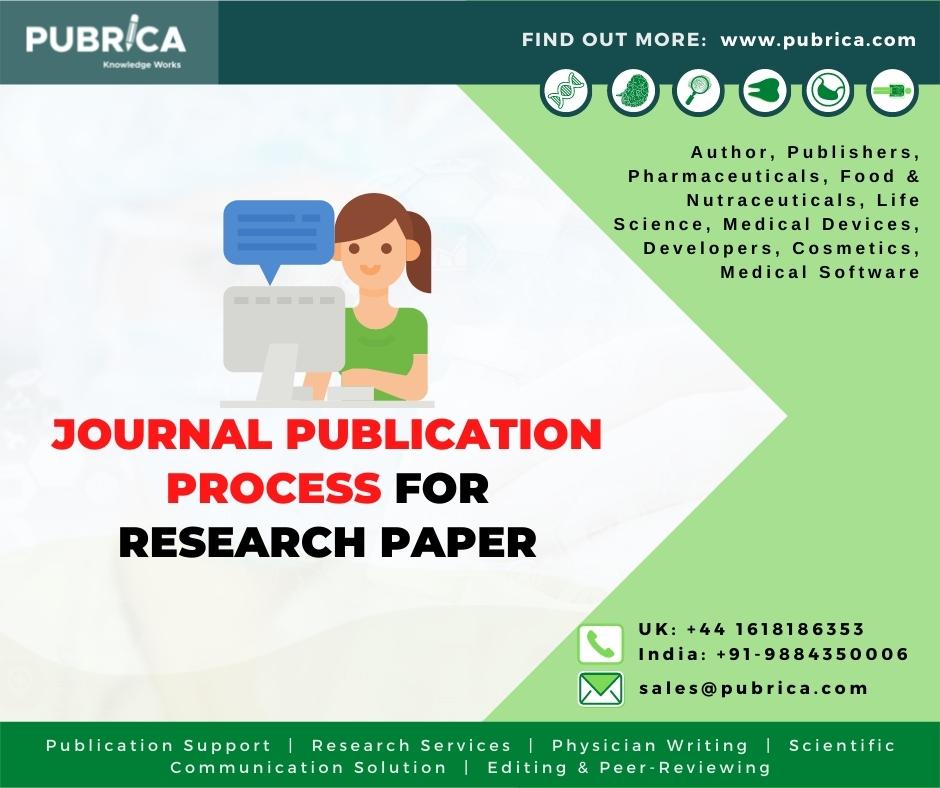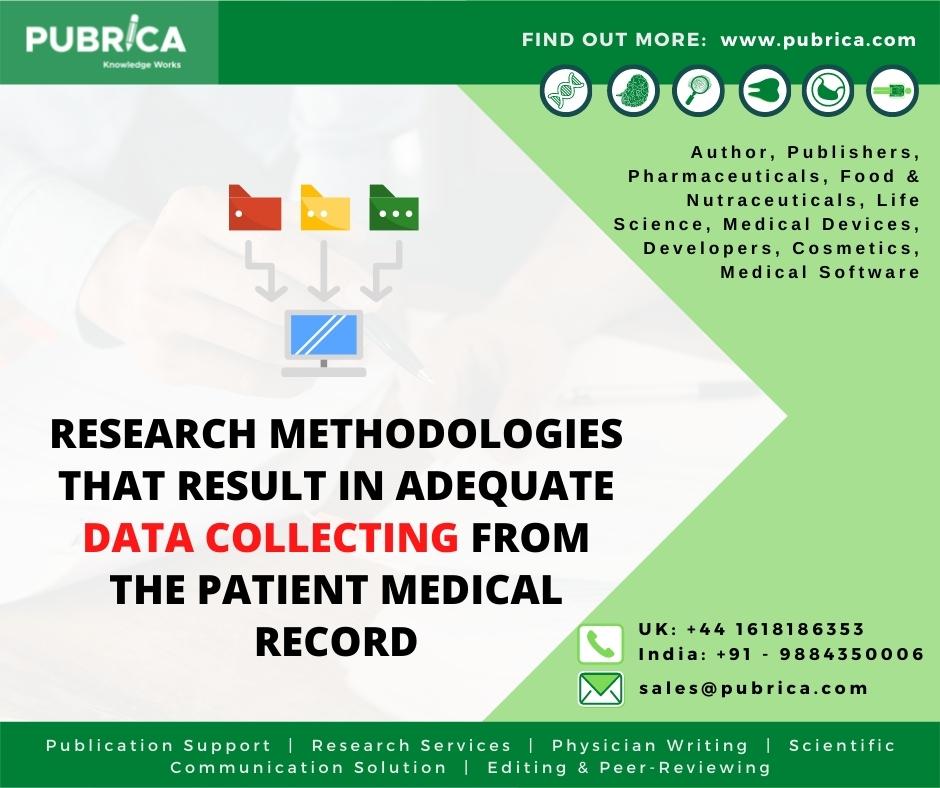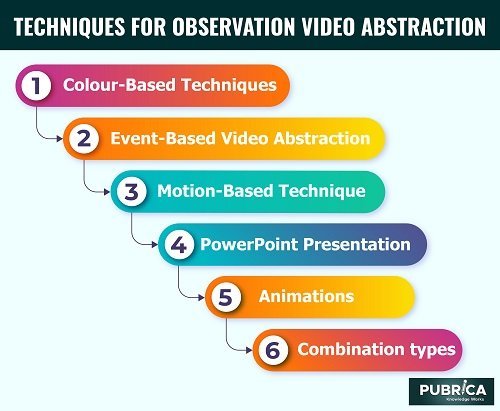
Journal Publication Process for Research Paper
March 18, 2022
Research methodologies that result in adequate data collecting from the patient medical record
March 26, 2022In brief
An article’s abstract briefly describes a frequently used document to pre-select content relevant to the user. The abstract and the document are written in the same medium, text. In the multimedia era, video abstractions might be used similarly: as brief extracts that convey the essence of a longer movie, with no interruption in the presenting medium. However, the current state of the art for indexing and exploring huge video archives is to employ textual abstracts. A video abstract is a series of moving pictures taken from a lengthier movie that is significantly shorter than the original yet retains the original’s essential meaning.
Introduction
What is a video abstract?
The same copyright rules apply to video abstracts to the corresponding article. The Video Abstract determines to emphasize the most critical aspects of your research. Your focus should be on strategies to resentment your audience’s interest and persuade them to read your work. As you will see in these recommendations, high-quality videos may be made for a reasonable price (1).

Importance of video abstracts
A technique for creating a video summary, which can be a sequence of fixed pictures (keyframes) or moving images, is known as video abstraction (video skims). In terms of browsing and direction-finding, a good video abstract will allow the user to obtain the most information about the target video sequence in the shortest amount of time or enough information in the shortest amount of time. Various concepts and approaches for successful video content abstraction have been presented throughout the years. Here it describes the fundamental components of each method and how they are addressed in individual works.
TECHNIQUES FOR OBSERVATION VIDEO ABSTRACTION (2)
- Colour-Based Techniques – Because of its insensitivity and stability against changes in direction and size, the colour is the most effective, expressive, and essential characteristic of each frame/image. Many video abstraction approaches exploited this feature according to this characteristic. The colour histogram has been frequently utilized to produce abstracted video by calculating the similarity between frames to choose representative keyframes.
- Animations – It might become difficult to convey some working principles or occurrences with manual sketching abilities over time. You can use publicly accessible animation software tools to create dynamic or stationary picture graphics in such cases. Unambiguous and straightforward representations are possible using programmes like Animaker, Blender, K-3D, and Plastic Animation Paper, and these are more aesthetically attractive and a more cost-effective method to communicate your work in a captivating way.
- Motion-Based Technique – Pixel to pixel frame differences and optical flow are the two most popular approaches for motion estimation. For the first time, video abstraction offered a motion estimate approach for extracting keyframes. The optical flow was estimated for each frame in this method, and the findings were then utilized to generate an essential motion measure. Finally, keyframes are obtained by locating the motion’s local minima, previously identified by studying this measure as a function of time.
- PowerPoint Presentation – Researchers have been using PowerPoint to showcase their findings on various platforms for a long time. This easy method may also be utilized to describe your study abstract utilizing PowerPoint’s insightful pictures. It’s also free to use and comes with all of the tools you’ll need to arrange your video abstractions with the help of clean slides. It’s more crucial to focus on the section than the facts of your study while creating a narrative PowerPoint presentation for your video abstract.
- Event-Based Video Abstraction identifies and arranges important events (at the highest semantic level) to preserve the original film’s spirit. An approach that combines motion analysis with video skimming to create an event-based method examines the optical flow to find exciting events and compare them to previous data. If no events of interest were detected, continuous frame dropping was employed, and those frames that featured events of interest were kept in the video abstract.
- Combination types- The other approach for segmenting and classifying video segments used a mix of object and camera movements. The motion metrics are calculated using two optical flow algorithms, each employing two different keyframe selection criteria. The quality of this procedure is that it can create meaningful abstracts for sports videos by collecting high activity material and being threshold-independent, but it is a domain-specific approach.
VIDEO ABSTRACTION PROPOSED FOR OBSERVATION
Most video abstractions for research were created as browsing tools to make big videos easier to view and explore. On the other hand, video abstraction may be used as a preprocessing stage in video indexing and retrieval applications.
- The first stage in video analysis is pre-sampling, which picks appropriate frames for subsequent processing and minimizes the computing load. Incorrect sample rate results in a bad video abstract (low sampling rate) or a video abstract that is too brief (high sampling rate).
- The second stage in the video analysis module is feature extraction. Feature selection and extraction are crucial processes that directly impact the clustering algorithm’s effectiveness. Feature selection picks prominent characteristics, simple enough, and quickly computed features that characterize unstructured data. In contrast, feature extraction converts this input data from a high-dimensional space to a lower-dimensional one.
- Colour and texture are two critical aspects of any image’s visual substance. Typical colour feature extraction approaches include colour histograms, colour moments, colour correlation, scalable colour descriptor (SCD), and colour structure descriptor (CSD). They have computed a colour histogram in HSV colour space to extract colour features (which is close to human visualization). The computed histogram was then quantized to 8 bins to reduce dimensionality without sacrificing information (3).
- Technical Specifications when Creating a video abstract, video, and audio quality is critical. Making a compromise on one of these will defeat producing a multimedia abstract.
• Make sure your video is recorded in a quiet environment with no background noises.
• Record your voice with a high-quality microphone.
• Record the abstract in a well-lit room to preserve an excellent visual of it.
• If not necessary, avoid using flash photography or videography.
• Separate the narration from the video clip if possible, and this will assist you in successfully managing your video’s audio quality.
- Accessibility- It’s critical to save your movie in a format that academics all around the world can understand. Video formats such as MP4, MOV, WMV, and MKV are ideal since they are widely used and compatible with most operating systems. Maintain an appropriate aspect ratio to accommodate all screen sizes.
Video submission guidelines
- The author should include video picture files as supplementary electronic material (ESM). When the manuscript is approved, an associate editor in charge of video submissions will ask the author to upload video pictures to MOMO (Make Our Movies Open) (through the website) and e-mail the rest of the manuscript to the associate editor.
- On this occasion, instructions for the uploading procedure will be supplied.
- The video cannot be changed or withdrawn once published in the Online First article. We propose that writers upload a new file to MOMO and get a different identification code if they want to change the clip for any reason.
- If you have any questions, please contact the head editor. Please remember that we do not allow any films depicting human conduct.
Conclusion
Many video applications rely on video abstraction, such as indexing, browsing, and retrieval. The size of the keyframe set, representation scope, base unit, and underlying computational processes are all critical factors in keyframe extraction. Similarly, five key aspects are identified and explained for video skims the overall procedure, the duration of the video skim, the working data domain, the underlying calculation method, and the characteristics employed (4).
About Pubrica
Pubrica meets summit standards and protocols of journal publishing ethics in every single phase of services and processes. Pubrica adheres to authorship guidelines drafted by the International Council of Medical Journal Editors (ICJME), and the scope for services will be routinely updated as per the Committee of Publication Ethics (COPE) and International Society of Medical Publication Professionals guidelines (ISMPP).
References
- Wang, Xin, et al. “Video captioning via hierarchical reinforcement learning.” Proceedings of the IEEE Conference on Computer Vision and Pattern Recognition. 2018.
- Truong, Ba Tu, and Svetha Venkatesh. “Video abstraction: A systematic review and classification.” ACM transactions on multimedia computing, communications, and applications (TOMM) 3.1 (2007): 3-es.
- F. F. Chamasemani, L. S. Affendey, N. Mustapha and F. Khalid, “A study on surveillance video abstraction techniques,” 2015 IEEE International Conference on Control System, Computing and Engineering (ICCSCE), 2015, pp. 470-475, doi: 10.1109/ICCSCE.2015.7482231.
- Kumar, MP Pavan, et al. “Structure preserving image abstraction and artistic stylization from the complex background and low illuminated images.” ICTACT Journal on Image and Video Processing 11.1 (2020): 2201-2210.
